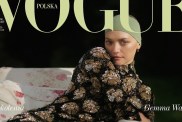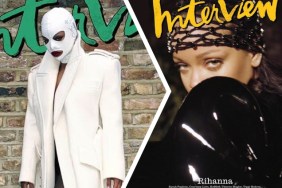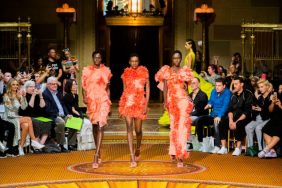

The history of the Oltuski family’s involvement in the diamond industry began in postwar Germany and has now culminated with the publishing of the book, Precious Objects by Alicia Oltuski. In her book, which has received praise from, among others, The Wall Street Journal, W magazine, The New York Post, and has landed Oltuski in the Fall 2011 Barnes & Noble Discover Great New Writers selection, the twenty-six year old journalist takes readers behind the scenes to reveal the inner workings of the diamond industry, some of its most notable players, along with personal accounts of her family’s involvement working in the diamond district. I should add that I’ve known the Oltuski family my whole life so it was with an added jolt of excitement that I read Alicia’s debut novel and can honestly say that it blew my expectations out of the water — as any book that begins with an account of someone walking around New York City with thousands of dollars worth of precious jewels strapped to their chest and hidden underneath a jacket, would.
We spoke to Alicia to find out about her family’s involvement in the trade, their reaction to the book, the most surprising things she learned while researching the diamond industry, the longstanding relationship between Jews and the diamond industry, and more.
The Fashion Spot: Can you tell us a little bit about your family history in the jewelry business?
Alicia Oltuski: My grandfather bought his first diamond in a DP camp in postwar Germany. He caught a glimpse of this German man with a briefcase and asked him what he was offering. The German had six rough diamonds he was looking to unload. My grandfather had never owned a diamond. He took one of the rough (unpolished) gems, got it cut and traded it for a BMW, which he traded for a thousand pairs of shoes, which he sold. He paid for the diamond after the chain of transactions. This deal initiated him into the world of diamonds and he continued buying and selling stones and jewelry after he came to America, eventually in New York’s historic diamond district. My father grew up watching him handle precious gems and, in the way sons were fated to take over their father’s businesses in those days, my father was fated—but without all the hackneyed resentment. He was mesmerized from boyhood.
tFS: How long did you spend researching your book?
AO: This is something of a difficult question to answer—at least with precision. As I began shaping my book narratively I understood with more clarity which aspects I’d need to spend the most time researching and which people I’d need to seek out. Because this was a project that I started during graduate school, I was able to research, write, go back and do more interviews, elaborate on descriptions, transcribe until my fingers went numb, and write more. In a way, I researched in layers.
tFS: How is it that Jews have had such a longstanding history in the diamond business?
AO: Jews and diamonds go way back. During the Middle Ages many commercial “guilds” did not accept Jewish people as members. The jewelers’ guild presented an anomaly. Diamonds were, in many ways, an ideal vocation for Jews, who were often expelled from countries or assaulted when pogroms hit. Had they dealt more widely in, say, farm animals, it would not have been as feasible to take their businesses with them when they bolted. Even the New York Diamond District’s history is deeply intertwined with the Twentieth Century Jewish narrative. Forty-seventh Street blossomed when large numbers had to flee Europe during the Second World War and the Holocaust.
tFS: What’s the most surprising thing you found out while writing Precious Objects?
AO: I think I used to believe that diamonds themselves were the most exotic aspect of this industry, but they’re not (though close). It’s the people.
tFS: How have your family/those who work in the diamond district reaction been to your book?
AO: I’m incredibly grateful that people both of and outside the diamond industry have received Precious Objects with interest and enthusiasm. A friend of the family was recently asked about my book while on vacation in Switzerland. My reaction was: they’ve heard about my book in Switzerland! And, of course, the members of my family have been great cheerleaders. But then, they also cheered for me when I performed in a Jazz/HipHop dance recital during junior high school—and that was the recital in which I accidentally shimmied up to center stage when it wasn’t my turn. I’m not sure they’re properly impartial.
tFS: Day-to-day do you wear jewelry? If so, what?
AO: I’m actually not the biggest jewelry wearer and this choice is more incidental than ideological. I love looking at jewelry and I adore uncovering the stories behind jewels and the people who deal in them. The piece of jewelry I wear every day is my wedding band. On occasion, I’ll put on a necklace, bracelet, or ring. I used to wear earrings but I accidentally let the holes close because I wasn’t paying attention, so I’m not sure anything worth too much should be entrusted to me, only the stories behind it – just don’t tell my father that: the first chapter in my book describes me carrying thousands of dollars’ worth of jewelry on my person.
Actually, I can demonstrate just how little precious jewelry I own with this tidbit: there was a robbery in an apartment where I once lived and it was clear that someone had rifled through my jewelry box, but had not found anything worth even stealing, other than a red necklace made of glass. I was like, Come on! Apparently, the jewelry I tend towards is not even worth pilfering. I’ll admit to having been a bit insulted. Just a bit, though—also very thankful that no one was hurt.







